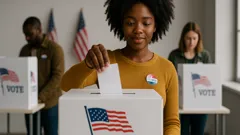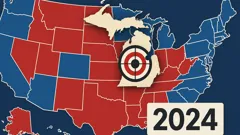1401
0
4 minutes
Suggested Articles

First-generation Ivy Leaguers triumph over unique college challenges
Discover key insights, life hacks, and data-driven tips for first-generation college students thriving in prestigious U.S. universities. Find practical strategies, unique challenges, and fresh perspectives essential for student success.

Families and neighbors rediscover unity as they break political silence together
Civic Education

Voter and Civic Education: The Cornerstones of True Democracy
Civic Education

Young voters ignite a powerful wave of change at the polls
Civic Education

Voters discover why political parties matter more than ever in shaping America
News & Updates

Americans build empathy and strengthen democracy through language learning
Civic Education

How Swing States Have Shifted and Why They Still Rule Elections
News & Updates

How Partisan vs. Nonpartisan Elections Shape North Carolina’s Cities
Voter Information

Patriotic education reshapes American classrooms as the nation nears 250 years
Civic Education

Funding freezes put affordable childcare and adult education at risk
News & Updates

Federal funding delays threaten vital support for US students and schools
News & Updates

First-generation Ivy Leaguers triumph over unique college challenges
Hiring

Americans brace for possible Social Security cuts that reshape retirement
News & Updates

Why this Florida data leak changes how we think about privacy
News & Updates

Build your own AI chatbot and unlock hands-on tech superpowers
Resources & Tools

How to outsmart hidden medical expenses in your golden years
Civic Education

California workers secure jobs this summer with new 2025 laws
Hiring
 Love Women Vibes
Love Women Vibes

Comments